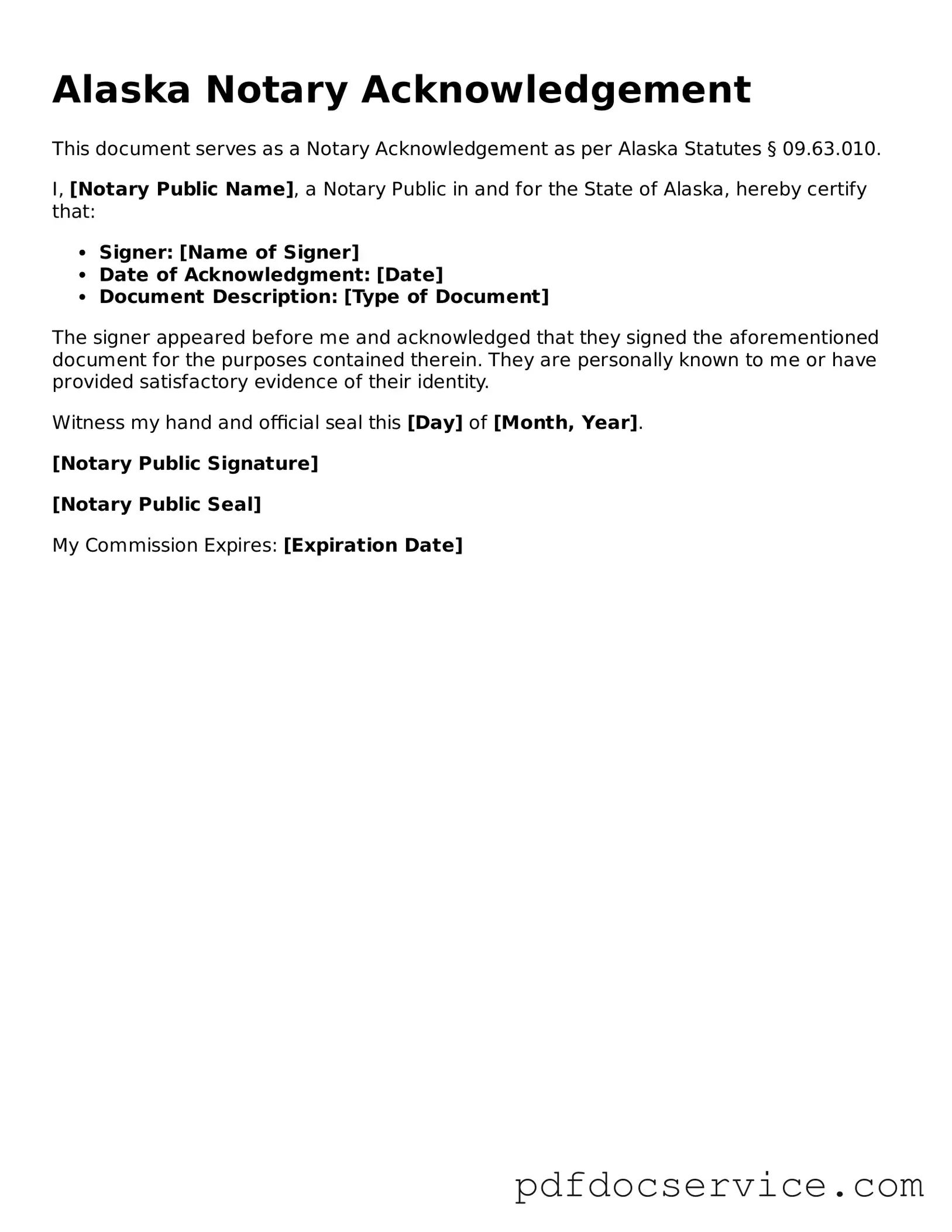The Alaska Notary Acknowledgement form is a document used to verify the identity of a signer and confirm that they willingly signed a document. This form is typically used in conjunction with various legal documents, such as contracts, deeds, and affidavits, to ensure their authenticity and integrity.
Who can act as a notary in Alaska?
In Alaska, a notary public is an individual appointed by the state to perform notarial acts. To become a notary, a person must meet certain requirements, including being at least 18 years old, a resident of Alaska, and having no felony convictions. After completing an application process, they receive a commission that allows them to notarize documents.
What is the purpose of the notary's signature and seal?
The notary's signature and seal serve as official verification that the notary has witnessed the signing of the document. This adds a layer of credibility and helps prevent fraud. The seal typically includes the notary's name, commission number, and the state of Alaska, making it a vital part of the notarial process.
To complete the form, follow these steps:
-
Fill in the name of the signer and the date of the acknowledgment.
-
Have the signer appear in front of the notary and present valid identification.
-
The notary will then ask the signer to confirm that they signed the document willingly.
-
Once confirmed, the notary will sign and affix their seal to the form.
Do I need to have the document notarized in person?
Yes, in Alaska, the signer must be present in person before the notary to complete the acknowledgment. This requirement ensures that the notary can verify the identity of the signer and confirm their willingness to sign the document.
Is there a fee for notarization in Alaska?
Yes, notaries in Alaska are allowed to charge a fee for their services. The maximum fee is set by the state, and it can vary depending on the type of service provided. It's a good idea to check with the notary beforehand to understand their specific fees.
How long is a notary commission valid in Alaska?
A notary commission in Alaska is typically valid for a period of four years. After this period, the notary must renew their commission to continue providing notarial services. Keeping track of the expiration date is essential to avoid any interruptions in service.
If you suspect fraud involving a notarized document, it’s important to take action promptly. You can report the incident to the Alaska Division of Corporations, Business and Professional Licensing. Additionally, consider consulting with a legal professional to understand your options and rights in this situation.
